LA BELLA VITA
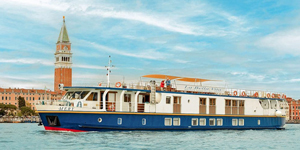
Venice & Lagoon, Bianca Canal, Po Valley
Up to 20 guests
Charters and Cabin cruises
Themed Cruises: Family, Gardens, Golf, Opera, Wine

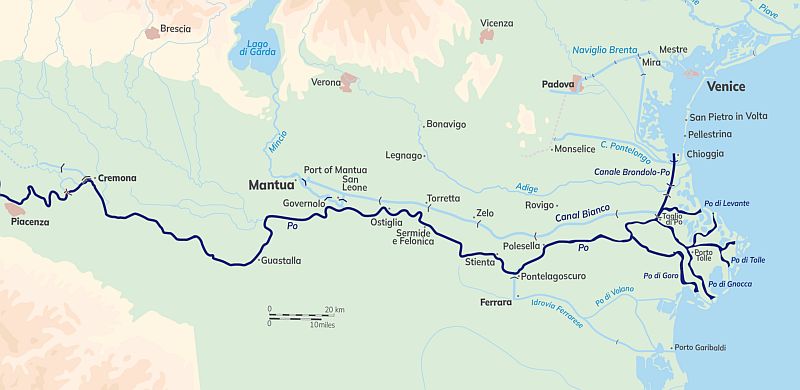
Map of the River Po, Italy
The River Po, Italy's longest river, flows through many cities and towns through its 562km course, including Turin, Piacenza, Cremona, and Ferrara.
Venice, the famous "floating city of Italy", is known for its romance, culture, and breath-taking beauty. Built on platforms stabilized with petrified trees, Venice is a unique destination with winding canals, gondolas, and linked by over 400 beautifully-arched stone bridges.
Lido island is one of two barrier islands situated in the Venetian Lagoon, the other being Pellestrina. They form the central part of the coastline of the lagoon on the Adriatic Sea. The peninsula of Cavallino forms the northern part, while that of Sottomarina forms the southern part. Three inlets between the islands and peninsulas provide access for the sea to the lagoon, and authorities have dredged the area sufficiently to accommodate the passage of cruise liners to the port of Venice.
Malamocco was the first and, for a long time, the only settlement on the Lido of Venice barrier island of the Lagoon of Venice. Its origins date back to the Roman occupation of Italy and was said to have acted as the port of Padua, to which it was connected by the River Brenta. Today, the village is home to 1,554 inhabitants. Its 12th century church, originally dedicated to Maddona della Marina (Our Lady of the Sea) and now devoted to Santa Maria Assunta, was built in the Veneto-Byzanitne style. It has since undergone numerous modifications.
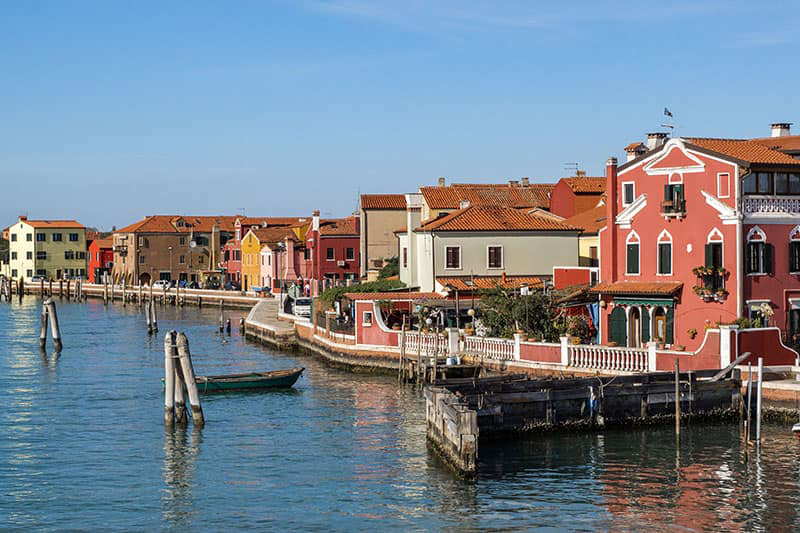
Pellestrina has 4 towns
Pellestrina is a large island forming a barrier between the Venetian lagoon and the Adriatic Sea. The seaward side has been bounded since the 18th century due to its sea-walls. There are four main villages on the island – San Pietro in Volta, Sant' Antonio di Pellestrina and Pellestrina – all of which are known for their colorful houses and the practice of making lace.
Chioggia, situated on a small island at the southern entrance to the Lagoon of Venice, is believed to have once been part of the Byzantine Empire. Like Pellestina, Chioggia is known for its lace-making. It is a miniature version of Venice, and has several medieval churches, many of which were rebuilt during the town's golden age in the 16th and 17th centuries.
Porto Fussone refers to a small district found at the mouth of the river. The Canale di Valle, which runs through the village, was once one path of the medieval Romea road which united the two important Benedictine monasteries of the area – the Monastery of San Michele Arcangelo di Brondolo and the Monastery of San Giorgio di Fosson. During the Austrian occupation, the embankment of the Canale di Valle was the only road that led from Brondolo to the fortification of Cavanella d'Adige, two of the most important structures built by the Austrians to defend the region.
Porto Viro, a major town on the River Po before its estuary, was first created during the Fascist era but was subsequently dissolved. It was established anew in 1995 by the merger of the communes Donada and Contarina and serves as a regional riverine port before the River Po enters the Adriatic Sea.
The commune of Taglio di Po owes its name to the grandiose work of river engineering carried out by the Republic of Venice in the early 17th century, to preserve its lagoon from the landfill caused by enormous contributions of alluvial sediment the River Po discharges into the Adriatic. A cut was deemed necessary to divert flood waters directly into the sea as opposed to into the lagoon itself. The project, which was first opposed by the neighboring Dukes of Ferrara and then by Pope Clement VII, was completed after nearly 150 years of negotiations. In 1797, with the fall of the Republic of Venice, the town was incorporated into the Province of Ferrara and, in 1798, the municipality was officially recognized with the name "Taglio di Po".
The most outstanding buildings in the town are the 18th century villas of Cà Borin and Cà Nani. The imposing 18th century villa of Tentuna Ca'Zen, its outbuildings and adjacent period church was built by the will of the Zen family of Venetian nobles. Later, the estate belonged to Lord Byron's lover, and the poet often stayed in the house. Today the property is a Bed and Breakfast, and it is the setting for La Bella Vita's dinner ashore.
Situated between the mouths of the rivers Adige and Po, Adria lies on the remains of the Etruscan city of Atria which may have given its name to the Adriatic Sea. An ancient settlement of significant importance, Adria houses the former cathedral of Santa Maria Assunta della Tomba, which features a 7th or 8th century octagonal baptismal font.
A commune of the nearby town of Rovigo since 1927, Borsea is a small, mainly residential village built around the 18th century church of San Zenone.
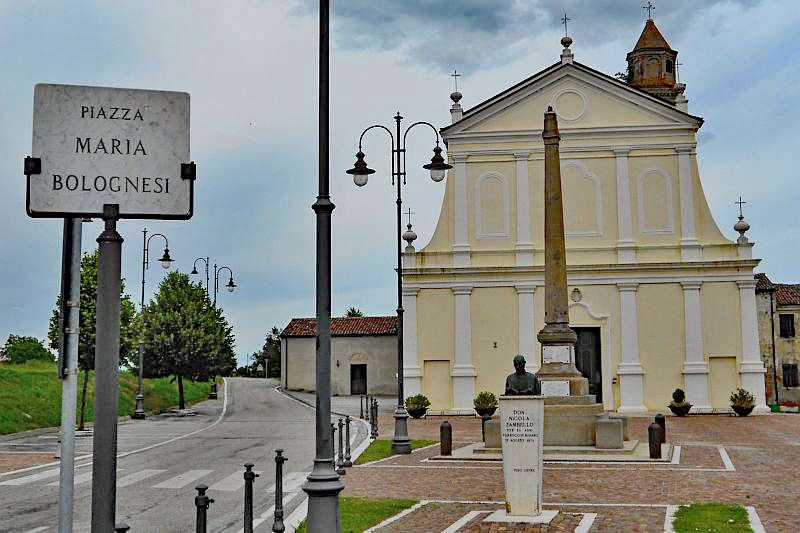
Bosaro is the smallest town in the province of Rovigo
Bosaro, the smallest town in the province of Rovigo, is located in the center of Polestine and lies between the Canalbiano to the north, the Fossa di Polesella to the west, and Collettore Padano in the south. The town's origins are found with the construction of the Canalbiano in the 15th century, to collect the waste water of the Tartaro and Veronese valley. Several of Bosaro's oldest buildings date to this period.
The first settlements to be established on what is today Canda, date back to Roman times, as evidenced by the discovery of tombs and other archaeological finds in the village. During the Middle Ages, the influential Este family included it among their possessions and granted the inhabitants exemption from paying taxes. This was possible due to the works carried out by the inhabitants to reclaim land from flooding and retreating armies. After Venetian rule, the town underwent Austrian and Napoleonic invasions until finally in 1866, it was annexed to the Kingdom of Italy.
Canda's noteworthy monuments include the villa Nani Mocenigo, the 15th century church of San Michele Arcangelo, the Loredan palace, and also some elegant aristocratic residences dating back to the Venetian period, such as the Villa Nani Mocenigo.
Zelo was first mentioned in the 10th century when its lands belonged to the monastery of Sant'Andrea in Ravenna. Settled in the early 11th century, it was destroyed after one of the disastrous floods that the region was accustomed to. The town's first church was mentioned in the late 16th century, but again it often flooded and so it was rebuilt on higher ground. A new church was built in the 17th century and was extended in the 18th century in the Renaissance style with Baroque influences. The church tower was built in 1724.
During the Napoleonic period, Zelo became part of the Lower Po, and was incorporated into the Kingdom of Italy in 1805. A decade later, it passed into the territory of Rovigo.
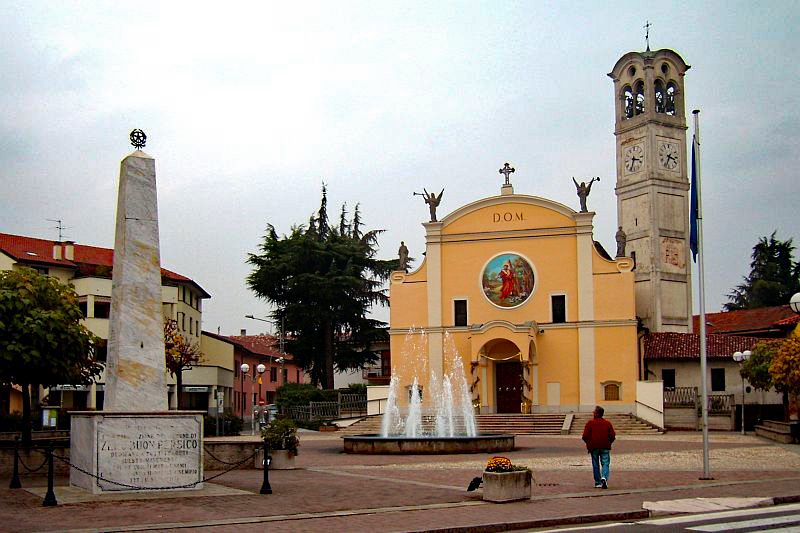
Zelo's church was rebuilt in the 1960s following its destruction in World War II
Due to the presence of the bridge over the Tartarus, the allies bombed Zelo during the Second World War. The aerial attacks caused the complete destruction of the Renaissance-Baroque church and only the bell tower survived. A new church was built in the 1960s, following the original's designs. In 2001, they raised the bridge, making the Canalbianco completely navigable.
Legnago Has held an important military role since the early Middle Ages. It was one of the Quadrilatero fortresses, a defensive system of the Austrian Empire in Lombardy-Venetia. This connected the fortresses of Peschiera, Mantua, Legnago and Verona between the Mincio, Po and Adige Rivers during the Italian Wars of Independence. In 1815, they planned and constructed the present fortifications, as Napoleon had destroyed the older Austrian defenses in 1801.
At the confluence of the Mincio and Po Rivers lies Govèrnolo, a riverside village with a marina and historic center, which includes an 18th century church and historic clock-tower. The Bertazzolo basin, a 12th century hydraulic works built by the Italian engineer Alberto Pitentino on the Mincio, ensured the stability of the water level of the Mantua lakes and remained operational until the mid-20th century.
Documents attest that the parish of Formigosa, which lies only a few kilometres from Mantua, already existed before 1600. Its parish church, dedicated to the Blessed Virgin Mary and San Urbano, was constructed in the 1840s, while its bell tower is from the 15th century. The church is neoclassical in style, built in the form of a Greek cross.
Until the 1950s, agriculture was the primary source of economic activity in the town. It subsequently lost its importance as a center for farming, as heavy industry was established in the eastern area of Mantua. Many kilns once worked in its vicinity, with the last closing in the early 1980s.
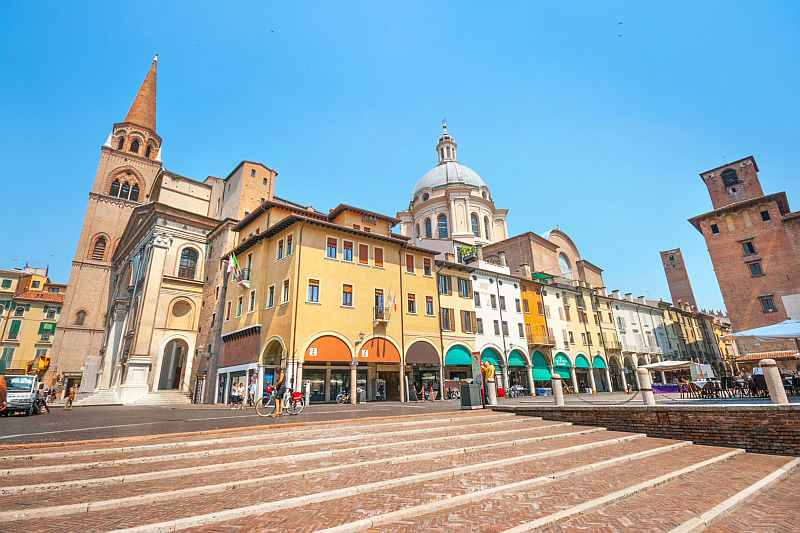
Mantua is noted for its significant contribution to the arts
Mantua, is surrounded on three sides by artificial lakes created in the 12th century to act as its defenses. Noted for its significant role in the history of opera, its architectural treasures, elegant palaces, and its medieval and Renaissance cityscape. Declared a UNESCO World Heritage Site in 2008, Mantua’s historic power and influence under the powerful Gonzaga family made it one of the main artistic, cultural and musical hubs of northern Italy, and one of the most splendid courts of Europe.
On the north bank of the Po River, Casalmaggiore was the birthplace of the Italian composers Ignazio Donati and Adrea Zani. Archaeological findings in 1970 testify to the area's Bronze Age settlement, although its name is derived from its Roman past as "Castra Majora" – a military camp.
Around the year 1000, a fortified castle belonging to the House of Este was situated in its lands and by the 15th century, the Venetian Republic ruled the commune. The town obtained the status of a city in 1754 with an imperial decree. After a period under Austrian rule, it became part of the newly unified Kingdom of Italy in 1861.
HOME > REGIONS > ITALY > Towns and Villages Along the Po River